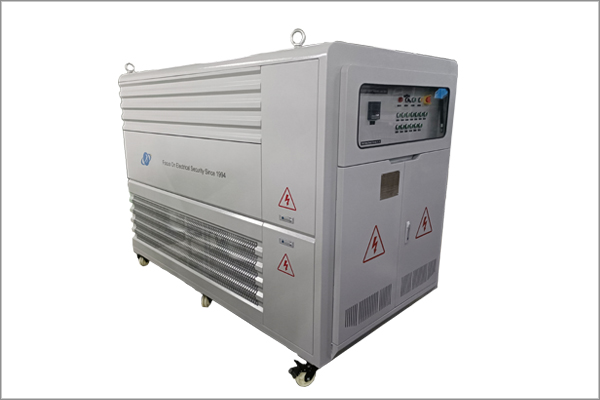How to Choose the Right Load Banks to Meet Testing Requirements
Time:2024-11-05
In power system and industrial testing, load banks serve as crucial testing equipment, playing a vital role. They can not only simulate actual power loads but also perform performance tests and fault diagnosis on power equipment, ensuring the stable operation of power systems. However, faced with the vast array of load bank products on the market, choosing the right load banks to meet specific testing requirements has become an issue worthy of in-depth discussion.
I. Clarify Testing Requirements
Before selecting load banks, it is first necessary to clarify one's testing requirements. This includes the load's power range, voltage and current range, load type (such as constant resistance, constant current, constant power, etc.), and special requirements (such as sudden load increase, sudden load shedding, etc.). These parameters will directly affect the choice of load banks, ensuring that the selected equipment can accurately simulate actual load conditions and improve the accuracy and reliability of testing.
II. Choose the Appropriate Load Type
Based on actual needs, choosing the right load type is crucial. Constant resistance loads are mainly used to simulate loads with fixed resistance, suitable for testing scenarios requiring stable resistance values; constant current loads are mainly used to simulate loads with constant current, suitable for tests with high current control requirements; constant power loads can simultaneously simulate loads with constant voltage and constant current, suitable for tests with specific power factor requirements. In addition, according to specific needs, load banks with special functions such as sudden load increase and sudden load shedding can also be selected.
III. Focus on Load Stability and Accuracy
Load stability and accuracy are important indicators for measuring load bank performance. Stability mainly refers to the degree of change in the load under different operating conditions, while accuracy refers to the error between the load value and the set value. Choosing load banks with high stability and high accuracy can ensure more reliable test results, reducing errors and uncertainties.
IV. Consider Load Transient Response Capability
In practical applications, loads may change significantly in a short period. Therefore, choosing load banks with good transient response capability is crucial for accurately simulating actual loads. Transient response capability can be understood by checking the technical parameters of the load banks or consulting the manufacturer, ensuring that the selected equipment can quickly respond to load changes within a short period, improving the accuracy and real-time performance of the tests.
V. Emphasize Load Reliability and Safety
Load banks may malfunction during long-term operation, so choosing load banks with high reliability is important. In addition, load banks may generate high voltages and currents during use, so safety is also a factor to consider. Load banks with functions such as overload protection and short-circuit protection can be selected to ensure the safety of the testing process and avoid damage to testing equipment and personnel.
VI. Consider Price and After-Sales Service
When selecting load banks, it is also necessary to comprehensively consider price and after-sales service. In terms of price, choices can be made based on one's budget and needs to ensure that the selected equipment offers the best cost-performance ratio. In terms of after-sales service, manufacturers with a good reputation and after-sales service system can be chosen to ensure that problems encountered during use can be resolved promptly, improving testing efficiency and accuracy.
VII. Pay Attention to Product Certification and Quality
Choosing products with quality assurance and authoritative certification is key to ensuring the quality and service life of load banks. By checking the product's certification information and quality assurance, one can understand the product's manufacturing standards, material selection, production processes, and other aspects, ensuring that the selected equipment can meet testing requirements and have high reliability.
Conclusion
Choosing the right load banks is of great significance for meeting testing requirements, improving testing accuracy, and reliability. By clarifying testing requirements, choosing the appropriate load type, focusing on load stability and accuracy, considering load transient response capability, emphasizing load reliability and safety, comprehensively considering price and after-sales service, and paying attention to product certification and quality, one can ensure that the selected load banks can accurately simulate actual load conditions, providing reliable support for power system and industrial testing.
News Recommendation
-
 2024-09-11
2024-09-11TRIUMPH LOAD EXHIBITING AT Enlit Europe 2024 -BOOTH 7.H08
-
 2023-04-21
2023-04-21TRIUMPH LOAD EXHIBITING AT DATA CENTER WORLD GERMANY 2023-BOOTH F909
-
 2023-04-06
2023-04-06TRIUMPH LOAD EXHIBITING AT ELECTRIC POWER TECH KOREA 2023 – Booth G109
-
 2022-05-05
2022-05-05What is the role of ac load bank for power supply?
-
 2022-05-05
2022-05-05What is the role of the load bank?



